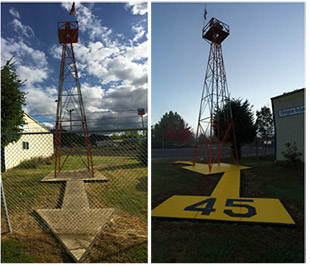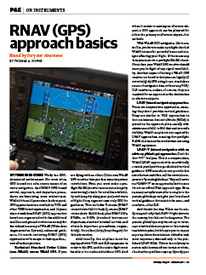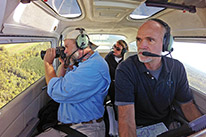A competition between two little trainers prompted readers to weigh in on the advantages of the Cessna two-seaters.
First, as a “reformed” CFI with more time in a “See One Five Oh” than I want to admit to having in my logbook, I remember the little guy—and not too fondly at times. But rather than dwell on that, you missed the boat on the area of performance.
You employed a rather “new” Cessna 150: “new” as 150s go. I suggest if you wish to see what that little airplane can do airspeed wise, compare a Cessna 152 to a late-1950s straight-tail, manual flaps, no-back-window turtleback 150. The one that was on my flight line was much faster than the newer 150s we had. It was a very popular airplane for flying cross-country; the handling was better also. And no, the window latch never did work.
On your next fly-off, you might consider the Cessna 152 against the much loved, and faster, 150 turtleback.
S.W. Stagg
AOPA 715606
Lakewood, California
I had a flight review in my 150 by George Haveman, developer of Home Acres Sky Ranch in Michigan, many years ago. At the time he had more than 50 years in the Cessna 150. He stated it was the only aircraft ever designed to fully recover from a spin (found out to take between 2,000 and 3,000 feet). I did tail spins and recovered. and then was shown that the 150—the only aircraft in the world that does so—would recover on its own: no input necessary. Truly exciting to have your arms folded in a spin. It surely works.
(If you have a passenger, it may be difficult to restrain him/her during this maneuver.)
So the best and safest Cessna, in my opinion, is the Cessna 150. It wants to crash less than you do!
Bill Bevan
AOPA 896516
Auburn Hills, Michigan
Beacon and arrow
I enjoyed your “Beacon and Arrow” story. From the first sentence I found it beautiful, like something Aldo Leopold might have written. Even better that it was an aviation musing.
Zen Boulden
AOPA 6032813
Ozark, Arkansas
I enjoyed the December article by W. Scott Olsen, “Beacon and Arrow.” In the mid-1940s growing up on a farm in central Indiana, I could see a faint glow of a rotating beacon of light on foggy nights. I was informed the light had to do with the airplanes flying at night.
Many years later, I bought a reproduction of airway map number 114 (Cincinnati, Ohio, to Chicago, Illinois). Less than five miles from the little town of Stockwell, Indiana, and our farm was the symbol of the rotating beacon on the route map. What a thrill. Maybe that flashing beam and my mother’s choice of airplane wallpaper (Pan Am Clipper flying boats) in my upstairs bedroom “pointed” the way for my first solo, 50 years ago this July.

Robert Dieterle
AOPA 1378629
Tecumseh, Michigan
In the last edition of AOPA Pilot I found the article by Scott Olsen regarding beacons and arrows. Here are some photos of the restoration of one of the beacons that I started at the Oregon Historical Society.
Stefano Perer
AOPA 6547207
Sherwood, Oregon
Bond, the pilot
I enjoyed the “Bond, the Pilot” article in the December issue, and the vast array of aircraft that James Bond seems to be so proficient in flying. One of my favorites that was omitted was the opening scene from the 1981 movie For Your Eyes Only, in which Roger Moore pilots a Bell Jet Ranger through a multistory building still under construction. I still can’t get a handle on just how old James Bond is supposed to be.
Larry Nunnery
AOPA 1008215
Elizabethtown, North Carolina
Getting down to business
A few years back, I completed my four-year degree with Liberty University and had to complete an aviation business course. In it I had to develop a business plan for a fictitious company. My choice was the Pilatus PC–12, mainly due to the reasons Tom Haines listed in his article. I’ve never flown this airplane, but I’m a huge fan of it for its range, hauling ability, short-field ability, and efficiency. It’s a lot like Beechcraft King Airs with their cargo door, but one fewer engine to maintain. In the Army I flew just this kind of King Air, which is a great airplane to operate.
Michael McManu
AOPA 1085340
Manahawkin, New Jersey
Craftsmanship: Repair of a lifetime
I enjoyed Mike Collins’ article on the Trinidad wing repair. Nice job and a methodical approach to the repair.
I, too, have been involved in some unique repairs, as a metal-smith in the Navy. I was in VF-101 and -103, both F–4J squadrons, and made numerous structural repairs. Most if it was honeycomb repair and a combination of metal and composite. While on a Mediterranean cruise, our A–7 squadron had a ship land with the nose gear retracted. It had extensive damage to the intake scoop both inside and out. Italian metalsmiths came aboard and made the repair. It was beyond the typical maintenance abilities of a squadron. They made a very good repair to new standards, which I recall took several weeks.
 Chuck Burtch
Chuck Burtch
AOPA 1274977
Phoenix, New York
Excellent article in December’s issue (“RNAV Approach Basics”) and a good refresher. A lot of info in a tight package.
Errata
In “Budget Buy: Citabria 7GCBC,” January 2016 AOPA Pilot, we incorrectly illustrated the American Champion Citabria. The photo shown was a Super Decathlon.
In “On Instruments: RNAV (GPS) Basics,” December 2015 AOPA Pilot, we wrote that localizer performance approaches were published with decision altitudes. LP approaches are nonprecision approaches, provide no vertical guidance, and have minimum descent altitudes (MDAs) like other nonprecision approaches. AOPA Pilot regrets the errors.
We welcome your comments. Editor, AOPA Pilot, 421 Aviation Way, Frederick, Maryland 21701 or email ([email protected]). Letters may be edited for length and style before publication.
What is your pilot certificate level?
Student 2%
Sport 2%
Recreational <1%
Private 50%
Commercial 27%
Airline transport pilot 18%
None 1%
Aviation eBrief poll
Hangar Talk
 “Richmond, Virginia’s Chesterfield County Airport is worthy of a $100 hamburger run,” says Senior Features Editor Julie Summers Walker. On assignment to cover the environmental organization SouthWings, Walker, Photographer Chris Rose, and Editor Ian J. Twombly met James Riverkeeper Pat Calvert (left), pilot Hap Endler (right), and SouthWings flight coordinator David Moore at King’s Korner, the airport eatery, before their flight along the James. “You know that situation when you’re meeting for lunch and don’t think you’re that hungry, but the options just are so appetizing you can’t stop yourself?” says Walker. “That’s the daily lunch buffet at FCI. For $7.50 you get an all-you-can-eat buffet featuringfried chicken, Virginia barbecue, country fried steak, an 18-item salad bar, and homemade bread pudding. If I’d realized we’d be doing tight low-level circles in a Cessna 182—and I’d be in the back on a warm fall day—I might not have gone in for that barbecue. Both Chris and I felt a little queasy, and I’m sure his experience was worse—he was peering through a camera lens the entire time.” See “Stewards of the Earth,” page 74. “A formation photo shoot on the way out of Richmond put Ian in the unenviable position of maneuvering around to capture Chris’ photos of Hap’s Skylane.” Note to self: Watch what you eat before flying formation.
“Richmond, Virginia’s Chesterfield County Airport is worthy of a $100 hamburger run,” says Senior Features Editor Julie Summers Walker. On assignment to cover the environmental organization SouthWings, Walker, Photographer Chris Rose, and Editor Ian J. Twombly met James Riverkeeper Pat Calvert (left), pilot Hap Endler (right), and SouthWings flight coordinator David Moore at King’s Korner, the airport eatery, before their flight along the James. “You know that situation when you’re meeting for lunch and don’t think you’re that hungry, but the options just are so appetizing you can’t stop yourself?” says Walker. “That’s the daily lunch buffet at FCI. For $7.50 you get an all-you-can-eat buffet featuringfried chicken, Virginia barbecue, country fried steak, an 18-item salad bar, and homemade bread pudding. If I’d realized we’d be doing tight low-level circles in a Cessna 182—and I’d be in the back on a warm fall day—I might not have gone in for that barbecue. Both Chris and I felt a little queasy, and I’m sure his experience was worse—he was peering through a camera lens the entire time.” See “Stewards of the Earth,” page 74. “A formation photo shoot on the way out of Richmond put Ian in the unenviable position of maneuvering around to capture Chris’ photos of Hap’s Skylane.” Note to self: Watch what you eat before flying formation.


